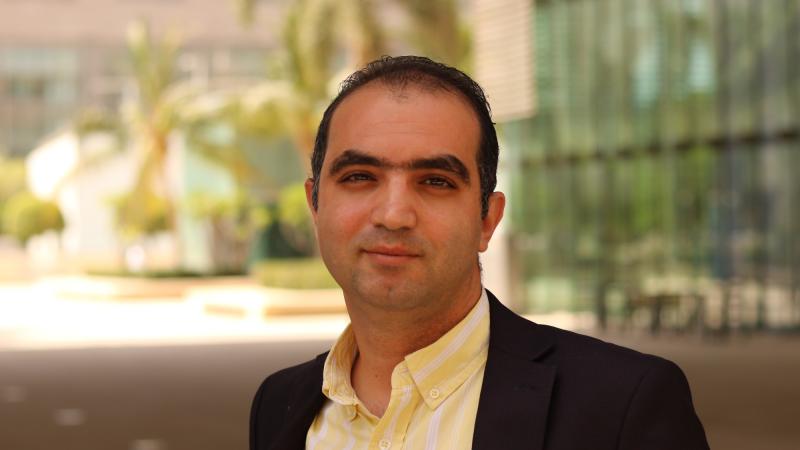AI-generated image using Google Gemini
By David Murphy
An interdisciplinary research team from KAUST has been named a finalist for the prestigious Gordon Bell Prize in Climate Modelling by the Association for Computing Machinery (ACM) Awards Committee for developing a groundbreaking exascale climate emulator. The emulator addresses the growing computational and storage needs of a high-resolution Earth System Model (ESM)— that models the physical, chemical, and biological interactions within Earth's climate system to understand and predict climate behavior under various conditions.
The ACM Gordon Bell Prize for Climate Modelling highlights innovations in applying high-performance computing (HPC) to climate modeling applications. Being named a finalist for this prestigious award is particularly noteworthy, as it marks the third consecutive year a KAUST team has been recognized, underscoring the University’s sustained leadership in HPC research.
“It is very exciting for our team to be selected as a finalist for this prestigious prize,” said Marc Genton, Al-Khawarizmi Distinguished Professor of Statistics at KAUST. “By leveraging high-performance exascale computing, our innovative method has enabled the stochastic generation of global hourly surface temperature emulations at an ultra-high spatial resolution (approximately 3 kilometers). This advancement is crucial for climate science and holds significant value for climate scientists.”
This new level of understanding allows scientists to produce and analyze detailed climate data more quickly and cost-effectively and aids the ability to forecast, mitigate and adapt to the challenges of a changing climate.
Ultra-high resolution climate variations
Imagine forecasting surface temperature for the entire globe, every hour of every day. That is the magnitude of the task this new climate emulator tackles, marking a significant advancement by being the first to generate, display and evaluate emulations on an hourly scale.
The exascale emulator, with a spatial-temporal resolution 32 times greater than existing global emulators, significantly advances climate modeling with its unparalleled accuracy and depth of information. It showcases its state-of-the-art capabilities by simulating 55 million locations at hourly intervals, generating a vast dataset of 482 billion data points for a single year of climate simulation. This remarkable accomplishment is achieved while maintaining a speed of 1 quintillion (a million trillion) calculations per second (1 Eflops/s) on the full-scale Frontier supercomputer, underscoring the advanced nature of the emulator and the massive amount of data it processes.
The emulator’s extensive capabilities extend beyond its impressive resolution. It incorporates advanced numerical techniques like mixed precision arithmetic and spherical harmonic transforms to optimize speed and efficiency, with performance demonstrated on Summit, Leonardo and KAUST's Shaheen III supercomputers.
Efficiently capturing these climate variations at ultra-high resolution is crucial for understanding complex climate patterns, enabling better-informed mitigation and adaptation strategies.

Combined expertise
This collaborative effort brought together the unique expertise of researchers from KAUST, the University of Notre Dame, U.S., and Saint Louis University, U.S., a climate scientist from the National Center for Atmospheric Research (NCAR), and NVIDIA.
With combined expertise in computing, statistics, climate science, signal processing and high-performance computing, the team includes KAUST researchers Professors Marc Genton, David Keyes, Georgiy Stenchikov and Ying Sun, Drs. Sameh Abdulah and Hatem Ltaief, postdoctoral fellow Yan Song, and Zubair Khalid, a visiting professor from Lahore University of Management Sciences, Pakistan.
A research paper titled 'Efficient stochastic generators with spherical harmonic transformation for high-resolution global climate simulations from CESM2-LENS2,' which serves as the basis for this work was recently accepted for publication in the Journal of the American Statistical Association. The team’s research findings will also be presented at the International Conference for High Performance Computing, Networking, Storage, and Analysis (SC24), which will take place in Atlanta, U.S., from November 17–22, 2024.
“Our interdisciplinary team is paving the way for more accurate, accessible and sustainable climate projections, which, I believe, are fundamental for understanding and mitigating the impacts of climate change,” concluded Genton.
Reference:
Abdulah, S., Baker, A. H., Bosilca, G., Cao, Q., Castruccio, S., Genton, M. G., Keyes, D. E., Khalid, Z., Ltaief, H., Song, Y., Stenchikov, G. L., and Sun, Y. (2024). “Boosting Earth System Model Outputs and Saving Petabytes in Their Storage Using Exascale Climate Emulators,” International Journal of High Performance Computing Applications, to appear.







